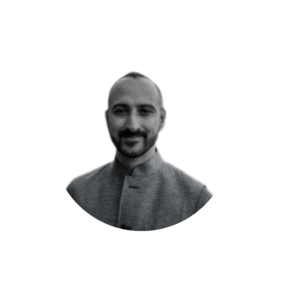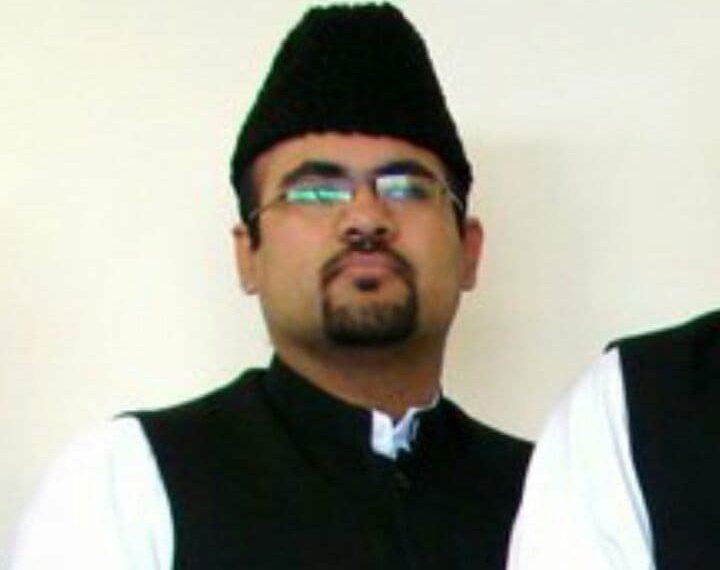The Pig’s Head: Anti-Muslim Racism and the Québec Mosque Shooting

On the evening of January 29, 2017, a white Franco-Québécois gunman entered the Islamic Cultural Centre of Québec City (ICCQ) after Isha prayers, and murdered six Black and brown Muslim men. Survivor Hakim Chambaz was there when his friend Azzeddine Soufiane was shot in the head after managing to rush the terrorist. Soufiane had backed the gunman into a shoe rack and won precious seconds for his fellow worshippers, before being killed along with Ibrahima Barry, Mamadou Tanou Barry, Khaled Belkacemi, Aboubaker Thabti and Abdelkrim Hassane. Five others were injured, including Aymen Derbali, who ended up permanently paralyzed and unable to walk.
During the month of Ramadan in 2016, someone had left the severed head of a pig at the mosque, wrapped in transparent plastic and decorated with gift bows. Who is killable but the non-human animal? In the cold days following the murders, I wondered what sights the white supremacist gaze – so like the sight of a gun – might reveal. Animals! Wearing clothes, miming human movements, speaking in our languages as they sit down to their pasta dinners. Grotesque, how humanoid they are able to appear. “In the eyes of the conqueror, savage life is just another form of animal life,” as the philosopher Achille Mbembe has put it (Mbembe 2003, 24; italics in the original). Animals are turned against “animals,” the pig’s head meant to offend Muslims by pointing to our dietary differences from Christians, but also to indicate our own animality, our killability.
The hijab and white feminism
While Islamophobia in Québec has been punctuated by episodes of hysteria over halal meat, hijab-obsessed non-intersectional feminism of the sort that perpetuates transphobia has provided it with the greatest respectability. Scholars have made two important points about the kind of closed secularism espoused by Québec under the term laïcité. The most common, to which I will return, is that it is a form of Catho-laïcité, agonistically birthed by Catholicism. Second, Université de Montréal professor Sirma Bilge has characterized it as “sexularism”– a reconfigured Orientalism which assumes that secularism will inevitably lead to the emancipation of women and queer people; that Muslims, especially Muslim men, are carriers of the diseases of heterosexism and misogyny; and that they must be actively reformed or excluded (Bilge 2012, 307). When the Islamic Cultural Centre’s imam, Mohamed Labidi, spoke at McGill University in the summer of 2017, he poignantly expressed alliance with struggles against misogyny and homophobia. His statements of solidarity were important and heartfelt. What is troubling is that he had to make them in defiance of “sexularist” mind readers and myth mongers.
This non-intersectional “white feminism” requires the collaboration of off-white women like Djemila Benhabib, who misapply their own experiences of misogyny in Muslim-majority contexts to their new and completely different white-majority context, and thereby validate white-feminist positions. The organization Pour les droits des femmes du Québec (PDF-Québec) received $120 000 in funding from the Coalition Avenir Québec (CAQ) government in 2019, then went on in 2021 to aid the government in defending its Islamophobic Bill 21 against a legal appeal, with the aid of a racialized woman “expert” on the hijab. (Incredibly, the CAQ government, which loudly proclaims its support for “free speech,” has recently announced funding for scholars who produce research in support of its own definition of laïcité.)
While claiming to defend women against the misogyny supposedly inherent to the hijab, the positions of non-intersectional feminist groups such as the PDF-Québec strip hijab-wearing Muslim women of their agency to choose, stigmatize and endanger them physically, and construct a glass ceiling in the workplace that bars them from access to jobs or even deprives them of their existing jobs. This very glass ceiling cut short the career of teacher Fatemeh Anvari, who was forced to leave her job when Bill 21 was applied. Such violence and restrictions against Muslim women, rooted in racism, do the patriarchy’s work for it.
Islamophobia is racism
Québec City has been a centre for overtly racist groups such as the terrorist Soldiers of Odin. But other Islamophobic groups such as La Meute or the German-imported Pegida disavow their racism via an argument that convinces many: Islamophobia is a critique of a religion, not of a race, in part because Islamophobia is framed as discrimination based on religion, with race secondary. Canada’s federal Conservatives were able to justify their opposition to Bill M103, tabled by Member of Parliament Iqra Khalid, which in the aftermath of the massacre in Québec City, sought to “condemn Islamophobia and all forms of systemic racism and religious discrimination.” Khalid’s private member’s motion was opposed by every Tory in the House of Commons, with the exception of Michael Chong, ostensibly on the basis that to condemn Islamophobia is anti-free speech.
As anti-Muslim anger rose in the days following 9/11, a racist in Arizona murdered Balbir Singh Sodhi. He had been helping to plant flowers near his gas station. Sodhi was not a Muslim, but a Sikh. Those days also witnessed a killing spree by a white murderer who called himself the “Arab Slayer.” None of the three men he shot was Arab. One of them was an Indian immigrant named Vasudev Patel – a Hindu. For centuries, brown people have been racialized under whatever name has been convenient, from “Saracen” to “Hindoo” to “P@ki” to “Arab” to “Muslim.” Is it any coincidence that Sikhs, brown-skinned and sometimes turbaned, experience the same kinds of racism as Muslims, from the white supremacist terrorism of the Oak Creek Gurdwara massacre to the systemic racism of the Quebec Soccer Federation, legitimated and endorsed by Bill 21?
Junaid Rana has explained, Islamophobia is a gloss for the anti-Muslim racism that collapses numerous groups in the single category ‘Muslim.’ The ‘Muslim’ is a category that encompasses many nationalities, social and cultural practices, religious affiliations (from Muslim Sunni and Shia to Christian, Sikh, and Hindu). (Rana 2011, 30)
It is a mistake to think that skin colour and other phenotypic attributes are the only things racists latch onto in order to racialize their fellow humans. To science, race is a nullity. But Arun Kundnani and Deepa Kumar have argued that it is precisely because of the constructedness of race that “it is perfectly possible for cultural markers associated with Muslimness (forms of dress, rituals, languages, etc.) to be turned into racial signifiers” (Kundnani and Kumar 2015). Alia Al-Saji and Jasbir Puar have shown how the hijab and the turban are extensions of Muslim and Sikh bodies, rather than mere articles of clothing (Alia Al-Saji 2010, 90; Puar 2008, ch. 4). And Ania Loomba has exposed a history of white Christians racializing dark-skinned people since the period that they call medieval, by imagining the Islam of “Saracens” as a part of their bodies, a skin pigmentation or a peculiar odour that heathens possess (Loomba 2009, 503–8; Malory 1906, 48).
It is African Muslims who have the longest presence in the “here” to which racists insist we do not belong. White men brought the “black” Muslim whom we know only as “Estevanico” to New Spain in 1527 as a slave (Herrick 2018). Many more Black Muslims would be enslaved in the succeeding centuries, most of whom came from the same western part of Africa as the Guinean Ibrahima Barry and Mamadou Tanou Barry (Diouf 2013). Attitudes toward another kind of Muslim descendant in early New Spain show how the logic of anti-Muslim racism has worked. These were the Moriscos: Andalusian Muslims converted, at least outwardly, to Christianity after the fall of Granada in 1492.
In 1583, the Inquisition denounced Francisco López, a Morisco discovered to be living in Mexico. Lopez had been caught speaking Arabic and crossing his arms saying “O Muhammad, O Muhammad.” Caroline Cook has searched Inquisition records to harvest evidence of crypto-Muslims in New Spain in the 16th and 17th centuries. Christians feared that if such crypto-Muslims reached New Spain, they would set about converting various Indigenous peoples to Islam, and to the allegiance of the “Grand Turk” in Istanbul, whose invasion of New Spain was always considered to be imminent (Cook 2016, 88, ch. 8). Suchlike paranoias were behind the 15th-century Muslim ban that barred these Andalusians from coming to New Spain. And yet some Moriscos did manage to come in defiance of the ban.
The other Andalusians who were cast out of the Iberian Peninsula and forbidden from travelling to New Spain were the Jews. The case of anti-Semitism shows, of course, how the religious and the racial can be fused in racist eyes. If Jews were racialized in Spain, both New and old, they have also long been treated as second-class citizens in Québec.
Catho-laïcité vs open secularism
It was on January 29, 1808 – 209 years before the January 29, 2017 Québec City massacre – that Ezekiel Hart took his oath as a Member of the Legislative Assembly of Lower Canada for the electoral district of Trois-Rivières. He took his oath upon the Hebrew Bible, his head covered in the Jewish manner. The unprecedented election of a Jew to the Québec government led Attorney-General Jonathan Sewell and Justice Pierre-Amable de Bonne to object that Hart had not taken his oath in the “customary manner” – that is, in a Christian manner (Price 1915, 43). Predictably, Ezekiel Hart was expelled from the House.
Bill 21 returns us to a situation in which Québec’s Jews are denied certain jobs on the basis of their head coverings. The anti-Semitism displayed by some Québec Catholics during L’Affaire Hart had much less to do with Christianity as such, and more with the desire to guard an identity from those who were different. This was as true of the internal other, the Jew, as it was of the external other, the Muslim. Among the roots of Québec ethno-nationalism are Orientalist and colonial notions regarding the Muslim, as Université de Montréal professor Catherine Larochelle demonstrates in her scholarship on Québécois school books and travel narratives. Adolphe Basile-Routhier, the Québecer who wrote the national anthem “Ô Canada,” travelled to Morocco in the 1880s. His remark about Muslim women’s seclusion in North Africa bears a striking resemblance to modern Islamophobic rhetoric regarding the hijab.
“Christianity has emancipated the Woman, and she is enslaved wherever it does not exist.” (Larochelle 2020, 39, quoting Adolphe Basile-Routhier)
But doesn’t the Québec government’s insistence on what it calls laïcité indicate that it has severed its ties with Catholic Christianity? Not at all. In the aftermath of the Quiet Revolution, Québec’s strain of secularism arose both in defiance of Catholicism and in its shadow, like a rebellious child who grows up to display the unmistakable traits of its rejected parents. Philosopher Muhammad Velji has noted that we can understand laïcité in Québec as form of “Catho-laïcité,” a secularism that claims to deal fairly between its citizens yet privileges its Catholic heritage over all else (Velji 2019). The exclusive public holiday status of Christian holidays, the closing of all shops on Sundays during the recent pandemic lockdown, and the existence of “a 30 metre, LED lit cross at the highest point in Montréal that is visible from up to 80 km away” are all signs of this default to the ghosts of Catholicism.
I’ve had conversations with white Franco-Québécois folks my age about their parents’ support for Bill 21. Several of them explained it to me in terms of the traumatic effects of the Catholic Church’s stranglehold over Québec upon the Quiet Revolution generation. It seems understandable that Québecers would not want to return to that era and that they would be staunch in the defence of the gains they made in the 1960s. But why must the victims of trauma visit that trauma upon racial minorities who have nothing to do with it? There is no need for a laïcité that discriminates so religiously against Muslims, Sikhs, and Jews. Nor is there any need to countenance cis–hetero–misogyny carried out in the name of religion. Jocelyn Maclure and Charles Taylor have set out a distinction between closed and open secularism:
An open secularism recognizes that the state needs to be neutral – laws and public institutions must not favor any religion or any comprehensive secular view — but also acknowledges the importance that the spiritual dimension of existence holds for some people and, as a result, the importance of protecting individuals’ freedom of conscience. (Maclure and Taylor 2011, 58)
Such a secularism must also respect the rights of women and other non-men, queer and transgender people. Queer, trans, nonbinary, and female-identified Muslims and Sikhs are already having conversations about how to take power within our communities. But the systemic racism of Bill 21 does not help us one bit as we have those conversations.
Research by Denise Helly and Geneviève Mercier-Dalphond into rising Islamophobic incidents in Québec has shown how the legal stigmatization of the hijab has led to the harassment of Muslim women in particular, as they are seen both as threats and misguided dupes in need of saving (Mercier-Dalphond and Helly 2021). Naved Bakali’s research has also shown the kind of racism that Muslim boys in the Québec school system experience, and how it shapes them (Bakali 2016, ch. 6). Islamophobia is gendered. Brown and Black men require violence to subdue, because we are read by the racist gaze as violent ourselves.
When he visited McGill, Québec City mosque attack survivor Hakim Chambaz told me about his murdered friend, Azzeddine Soufiane, who was posthumously awarded the Canadian Star of Courage. Hakim told me about his trip to Mecca and Madina with Azzeddine, and how his friend – a grocer – had cured his stomach pains with a particular herb. One wishes we knew of a herb that would cure the pigheadedness of those using Bill 21 to further their ethno-nationalist agenda. It remains to be seen whether the Canadian Supreme Court will uphold Bill 21, or whether it will be shown to be in contravention of the Canadian Charter of Rights and Freedoms in spite of the CAQ’s cavalier use of the “notwithstanding” clause. Meanwhile, we must acknowledge the presence and history of racism in our province and hold to the belief that a better secularism is possible.
References
Alia Al-Saji. 2010. “The Racialization of Muslim Veils: A Philosophical Analysis.” Philosophy & Social Criticism 36 (8): 875–902.
Bakali, Naved. 2016. Islamophobia: Understanding Anti-Muslim Racism Through the Lived Experiences of Muslim Youth.
Bilge, Sirma. 2012. “Mapping Québécois Sexual Nationalism in Times of Crisis of Reasonable Accommodations.” Journal of Intercultural Studies Journal of Intercultural Studies 33 (3): 303–18.
Cook, Karoline P. 2016. Forbidden Passages: Muslims and Moriscos in Colonial Spanish America. Philadelphia: University of Pennsylvania Press.
Diouf, Sylviane A. 2013. Servants of Allah: African Muslims Enslaved in the Americas. New York: New York University Press.
Herrick, Dennis. 2018. Esteban: The African Slave Who Explored America. Albuquerque: University of New Mexico Press.
Kundnani, Arun, and Deepa Kumar. 2015. “Race, Surveillance, and Empire.” International Socialist Review, no. 96 (Spring). https://isreview.org/issue/96/race-surveillance-and-empire/index.html
Larochelle, Catherine. 2020. “Petite histoire du nationalisme Québécois et de ses racines orientalistes.” In Modération ou extrémisme?: Regards critiques sur la loi 21, edited by Leila Celis, Dia Dabby, Dominique Leydet, and Vincent Romani, 29–42. Quebec: Presses de l’Université Laval.
Loomba, Ania. 2009. “Race and the Possibilities of Comparative Critique.” New Literary History 40 (3): 501–22.
Maclure, Jocelyn, and Charles Taylor. 2011. Secularism and Freedom of Conscience. Cambridge, Mass.: Harvard University Press.
Malory, Thomas. 1906. Le Morte d’Arthur. London: J.M. Dent & Sons. https://archive.org/details/lemortedarthu02malo
Mbembe, Achille. 2003. “Necropolitics.” Translated by Libby Meintjes. Public Culture 15 (1): 11–40.
Mercier-Dalphond, Geneviève, and Denise Helly. 2021. “Anti-Muslim Violence, Hate Crime, and Victimization in Canada: A Study of Five Canadian Cities.” Canadian Ethnic Studies 53 (1): 1–22.
Price, Rabbi Julius J. 1915. “Proceedings Relating to the Expulsion of Ezekiel Hart from the House of Assembly of Lower Canada.” Publications of the American Jewish Historical Society, no. 23: 43–53.
Puar, Jasbir K. 2008. Terrorist Assemblages: Homonationalism in Queer Times. Durham: Duke University Press.
Rana, Junaid Akram. 2011. Terrifying Muslims: Race and Labor in the South Asian Diaspora. Durham: Duke University Press.
Velji, Muhammad. 2019. “Legislative Catharsis, Part One: A Primer on Québec’s Veil Bans for Europeans.” The Religion Factor. May 22, 2019. https://www.rug.nl/research/centre-for-religious-studies/research-centres/centre-religion-conflict-globalization/blog/legislative-catharsis-part-one-a-primer-on-quebecs-veil-bans-for-europeans-22-05-2019
Pasha M. Khan is an Associate Professor at the Institute of Islamic Studies at McGill University and a member of the Montréal Serai editorial board. He is the author of The Broken Spell: Indian Storytelling and the Romance Genre in Persian and Urdu (Wayne State University Press, 2019), as well as several academic essays. His views do not necessarily reflect those of McGill University.
Courtesy: montrealserai.com



